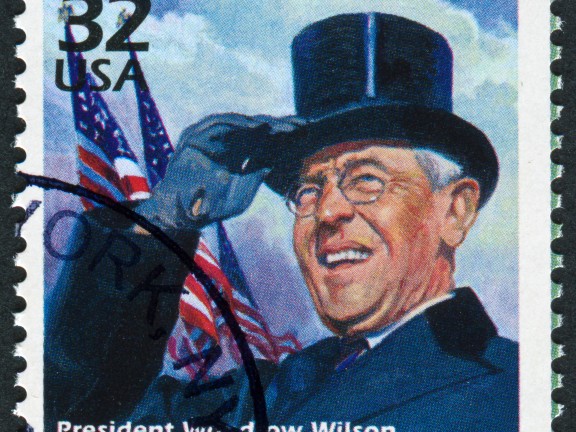The Decline of American Public Administration

The current crisis in the teaching of public policy, which I have chronicled in previous posts here and here, is closely related to the decline of a related field, that of public administration. If you want some notion of the problem, just try uttering the words “public administration” before a roomful of students and watch them look at their phones or start to fall asleep. Nonetheless, the classic field of public administration is one of the most important today, and its decline (at least in the United States) is one of the reasons why we get poor service from government.
The father of the academic field of public administration is generally held to be Woodrow Wilson, whose 1887 article “The Study of Administration” argued that “it is the object of administrative study to discover, first, what government can properly and successfully do, and, secondly, how it can do these proper things with the utmost possible efficiency and at the least possible cost either of money or of energy.” Wilson distinguished between politics and administration, and consigned the latter to the efficient implementation of policies that have been determined by a country’s political authorities. According to him, public administration was a critically important but nonetheless understudied field in the United States.
The American state expanded dramatically during the Progressive Era and World War I, which led to a sense of urgency about the need to improve the government’s human capacity. The Training School for Public Service (parts of which were later absorbed by Columbia University) was founded in 1911 by the New York Bureau of Municipal Research, the Maxwell School of Citizenship and Public Affairs at Syracuse in 1924, and the Woodrow Wilson School at Princeton in 1930. Law schools also played a very important part in the training of officials who would staff the American government during the New Deal and World War II. By the middle of the 20th century, public administration reached its peak as one of the four major subdisciplines recognized by the American Political Science Association.
The prestige of public administration as a field began to wane beginning in the 1970s and 1980s as a result of larger changes in the social sciences, and particularly with the rise of economics as the queen of the social sciences. Many of the classics of mid-20th century public administration scholarship were context-rich single agency studies like Philip Selznick’s work on the Tennessee Valley Authority or Herbert Kaufman’s book The Forest Ranger about the U.S. Forest Service. They had little external validity and were unconnected to theory. Theory was provided by writers like Nobel laureate Herbert Simon, but it generally did not meet the mathematized standards of the emerging discipline of modern neoclassical economics. The social sciences in general moved towards empirical studies that could demonstrate causal relationships regarding human behavior in statistically rigorous ways. Public administration training, by contrast, remained focused on giving future public officials practical skills, much like a law or medical school, that would help them do their jobs as bureaucrats. The field of public administration hence gave birth to the field of public policy that focused on policy analysis, a child that grew up to completely overshadow its parent.
There was a different critique of classic public administration that emerged at the time of the Vietnam War, which grew out of discomfort with Wilson’s separation of politics and administration. Like Max Weber’s fact-value distinction, the effort to consign public administration to a politics-free box freed its practitioners from concern over the ends they were pursuing: Concentration camp guards could be taught how to do their jobs more effectively in a public administration program.
Moreover, with the growth of the post-New Deal administrative state, it was clear that bureaucrats did not simply implement directives from the political principals; rather, they had the discretion to actually make policy. The Administrative Procedure Act of 1946 was a quasi-constitutional settlement that in effect recognized the new powers that bureaucrats had come to hold. With passage of sweeping legislation during the 1970s like the Environmental Protection Act or the Occupation Health and Safety Act, bureaucrats themselves became the targets of the ire of many conservatives, who saw them as the unaccountable agents of an ever-expanding administrative state. The hostility of Steve Bannon and Donald Trump to the administrative (a.k.a. “deep”) state is simply a continuation of this tradition.
(To be fair to the bureaucrats, it is really the legislature that is the source of much of this problem: Congress often cannot figure out what it really wants to do in a particular piece of legislation, and then delegates responsibility for fleshing this out either to administrative agencies or to the courts. The Dodd-Frank Act on banking regulation, for example, mandated the writing of thousands of pages of detailed implementing rules by Federal agencies.)
Over the past two generations, theorizing about public administration (defined in Wilson’s terms as the science of administration) has been largely taken over by economists. The dominant paradigm for thinking about administrative dysfunctions (like corruption) is principal-agent theory, in which the principal (the people, acting through elected representatives) delegates authority to various layers of agents to carry out its wishes. Corruption occurs when the agent follows his or her own private interest at the expense of the wishes of the principal. The problem, then, is how to align the incentives of the agents with that of the principal.
The 1990s saw a revival of interest in public administration (under the heading of good governance or anti-corruption) as people realized that free markets were not a solution to all problems and that effective states mattered. There was a plethora of reforms, mostly designed by economists, to make the public sector more efficient by imitating the private sector. These included introducing competition and an exit option inside the public sector through innovations like school vouchers (an idea first articulated by Milton Friedman), better measurement and benchmarking of performance to incentivize public officials, outsourcing government functions to the private sector or to public-private partnerships, and New Public Management, which sought to treat public officials like private sector executives by setting explicit performance criteria in their employment contracts.
Public administration reforms were most vigorously undertaken in Commonwealth countries like Britain, Australia, New Zealand, and Canada; the United States attempted its own version with Al Gore’s Reinventing Government initiative during the Clinton presidency. These new approaches enjoyed success in cities like New York, where Bill Bratton during his first term as police commissioner instituted a rigorous system to monitor the performance of his precinct captains and hold them accountable.
But elsewhere results were mixed. There were problems both in practice and with the underlying theory. Vouchers and greater flexibility in hiring and firing public officials met huge resistance from the bureaucrats themselves, who were often organized into powerful unions; it proved very difficult to measure performance in many parts of the public sector; legislatures were unwilling to provide sufficient resources or authority to incentivize their agents. The economists’ theory was also defective: Real world governments often entailed multiple principals of equal legitimacy giving contradictory mandates to their agents; authority in many bureaucracies necessarily flowed from knowledgeable agents upwards towards their clueless principals (as Herbert Simon pointed out many years ago). Don Kettl and John DiIulio have argued that the outsourcing craze has been carried too far, with government services being provided by layers of contractors less accountable than their public sector counterparts. Finally, there is a big problem with a theory that assumes that public officials are primarily motivated by material incentives: Many do what they do out of a dedication to public service and are, in DiIulio’s phrase, “principled agents.”
In the United States, however, the biggest factor blocking serious public administration reform is the country’s underlying anti-statist political culture, and what I regard as America’s pathological distrust of government. Because they tend to regard government more as a threat to their liberties than an executor of their wishes, Americans persistently fail to provide the government with adequate resources or authority to do its job properly. This stands in sharp contrast to other wealthy liberal democracies in Europe and Asia, where the state receives far more trust as a protector of public interest than in the United States. Although distrust of government is particularly pronounced today on the Right, it is something shared by progressives as well. Because the government is starved of resources and authority, it fails to do its job properly. There are a legion of recent fiascoes, from the response to Hurricane Katrina to the Army 21 reforms to the rollout of healthcare.gov, documented in great detail by scholars like Peter Schuck and Elaine Kamarck. Because the public regards government as wasteful and ineffective, voters are reluctant to provide it with more resources or authority, locking us into a low-level equilibrium of bad outcomes.
This then brings us back to the crisis in public administration as a field. After a period of innovation and creativity driven by the economists, the field seems to have lost its way again. Since the heyday of principal-agent theory (which was largely driven by scholars outside traditional public administration) there has been no dominant approach to public sector reform generated by administrative scholars. Public administration programs have either disappeared or have been folded into public policy programs, with increasing focus on policy analysis rather than practical skill-building. The field has relatively little interchange with the other discipline that provides training for government, administrative law, and it is increasingly hard to get tenure as a public administration scholar. There is no clear path from a public administration school to a job in the Federal government.
One individual who is trying to push against this tide is former Fed Chairman Paul Volcker, who established the Volcker Alliance to push back against these trends. Volcker, whose background is in public administration, likes to tell the story of a conversation with a very prominent Princeton economist. Volcker lamented the decline of teaching in public administration, to which the economist replied, “But public administration isn’t even a field!” Volcker went on to point out that some prominent public administration scholars have gone on to great prominence, even rising to be presidents of major universities. The economist professed not to believe this, and wanted an example. The example Volcker gave was Woodrow Wilson, former president of Princeton University.
References:
John J. DiIulio, Jr., Bring Back the Bureaucrats: Why More Federal Workers Will Lead to Better (and Smaller!) Government (Templeton Press, 2014).
John J. DiIulio, Jr., “Principled Agents: The Cultural Bases of Behavior in a Federal Government Bureaucracy,” Jnl of Pub Admin Research & Theory 4: 277-320 (1994).
Francis Fukuyama, “Governance: What Do We Know and How Do We Know It?,” Annual Review of Political Science 19: 89-105 (May 2016).
Elaine C. Kamarck, Why Presidents Fail and How They Can Succeed Again (Brookings Institution, 2016).
Donald F. Kettl, The Transformation of Governance: Public Administration for Twenty-First Century America (Johns Hopkins University Press, 2002).
Herbert Kaufman, The Forest Ranger: A Study in Administrative Behavior (Johns Hopkins University Press, 1960).
Peter H. Schuck, Why Government Fails So Often And How It Can Do Better (Princeton University Press, 2014).

